“Expertise is the enemy of innovation” – Stephen Shapiro
To read more about innovation, check out, What Fire Teaches Us About Innovation.

“Expertise is the enemy of innovation” – Stephen Shapiro
To read more about innovation, check out, What Fire Teaches Us About Innovation.

This seems like a simple question. One that would be easy to answer. But for those of us in a customer-facing and customer-impacting role or with big ambitions for our career, it is the kind of multiple choice question that leads to new insights and creates different day-to-day priorities and strategies.
WHO Do You Work for?
Option 1: You work for your employer. This is the most obvious one. You are employed by an organization from which you receive a paycheck. You have a boss (or several). Your boss might have a boss. Your goals are aligned to the financial or strategic goals of the business and the goals of those bosses. And your primary job is to advocate for the company with customers to create enterprise value for the investors of your company and the leadership who is advocating their interest. With this mindset, the importance of “managing up” is clear. Internal relationship building and being visible in the organization is critical. Whether your manager is collaborative, a micro-manager, or empowering, this view dominates the work landscape.
Option 2: You work for your customers. For marketing professionals and other customer-facing roles, this can be a very useful perspective for day-to-day prioritization. Customers ultimately pay the bills and drive growth and profit in the company. Often customer advocacy and resulting business results can lead to personal rewards. If your goals are aligned to the business goals of your customer, this can lead to great partnership and can optimize long-term customer value. Customer experience and customer service are paramount and are driving enterprise value (not the other way around). With this mindset, the importance of customer relationship building is clear. You need to spend time with your boss, after all. And your primary job is to advocate or the customer within the company.
Option 3: You work for yourself. Perhaps you are self-employed, consult, or rocking the gig economy, but even if you are not, it is helpful to consider this perspective. Even if you are an employee, you own your own career. You own your own development. And for most of us, we own how we apply our time and energy to the various problems and opportunities we face daily. Ultimately, you choose to join companies, which customers or markets you focus on, and how you pursue your personal passions over time. And with this approach, your primary job is to advocate for yourself with customers and the company, to align their goals with the work you want to pursue. In my experience, this perspective comes to the forefront in times of transition or discontent, but otherwise is under-prioritized.
As you consider your answer, know that it truly is a multiple choice question. Your answer will likely be a mix of all three and will vary over time as needs and priorities changes.
In any case, I highly recommend you spending time, being mentored by, and really understanding the needs of all three of your bosses - your employer, your customers, and yourself – to ensure that you are performing up to your fullest potential. We often don’t listen to ourselves or give ourselves the same compassionate and honest advice we would give to colleagues or our employees, even though we could benefit from the self-reflection. And most of us don’t ask or receive advice frequently enough from our employers or our customers and we should regularly seek out the gift of feedback. Armed with these insights, we can confidently answer the question and focus on the highest impact priorities.
This article was originally published on LinkedIn Pulse.
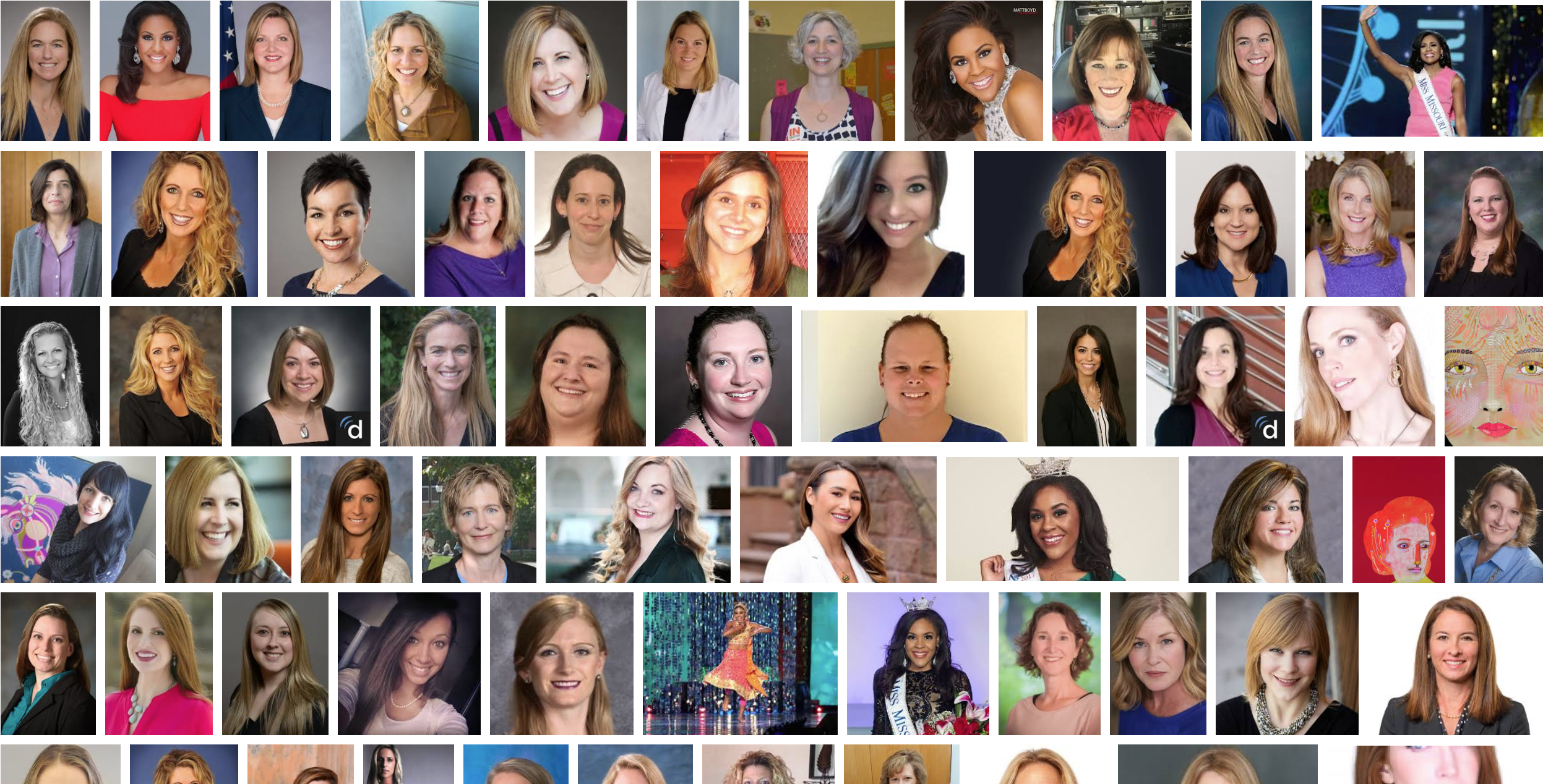
On the advice of a friend, Angela Naphin, whose recent podcast on personal branding, encouraged it, I Googled myself. Despite the popularity of my name, I was pleased to see that I was the 5th most popular image for Jennifer Davis and my blog ranked up there. Behind the runner-up Miss America. Behind a surgeon. Behind an artist. Behind an ambassador. I am in good company, it seems.
According to the US Census Bureau, and their very entertaining HowManyofMe.com website, there are 6,050 women named Jennifer Davis in the US alone. And there over a million women named Jennifer in the US. The name ipeaked in popularity around the time of my birth, which is why all of us Jennifers are about the same age (ie, think Jennifer Gardner, Jennifer Aniston, Jennifer Love Hewitt, Jennifer Lopez, and all the Jennifers you know, are related to, and work with).

But back to my point, my name alone is not distinctive enough to be a brand. Lucky for me it isn’t hard to spell or pronounce. It is easy for people all over the world to say. But it is not unique. It isn’t some celebrity baby name that some might read as strange, but is memorable. My name sounds like someone you have met before and perhaps you have. When I lived in Portland, Oregon, I was told all the time that there was a ticket agent who works at the Portland airport and a high school administrator with the same name. My only hope was that they were outstanding citizens who didn’t end up with our name splashed in a negative newspaper masthead. I think we have generally avoided all of that and as a group we have worked for good.
In the final tally, I am not any of the following Jennifers, but we may share some characteristics.
And the 6,049 others who share my name...are not me.
You, too, should Google yourself. Think about what makes you unique among your name-sharing peers and what make you similar. And then be you!

Millennials aren’t the problem. They are the solution.
For more of my thoughts on millennials, read Generation Gaps, Millennials, and the Future.
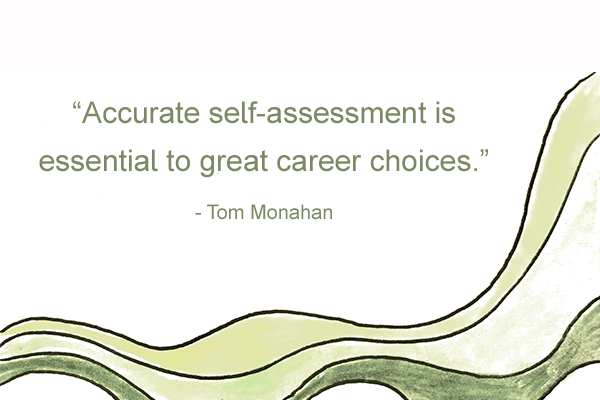
“Accurate self-assessment is essential to great career choices.” – Tom Monahan, Norton Street Capital
For more on self-assessment, read Know Thyself: The Toolbox.

Tuesday, February 13th. View details and RSVP here. Hope you can join!

“The role of the modern leader is turning data into stories and focusing actions and resources to these stories. Story is strategy.” – Jennifer Davis

“If you want to make enemies, try to change something.” – Woodrow Wilson
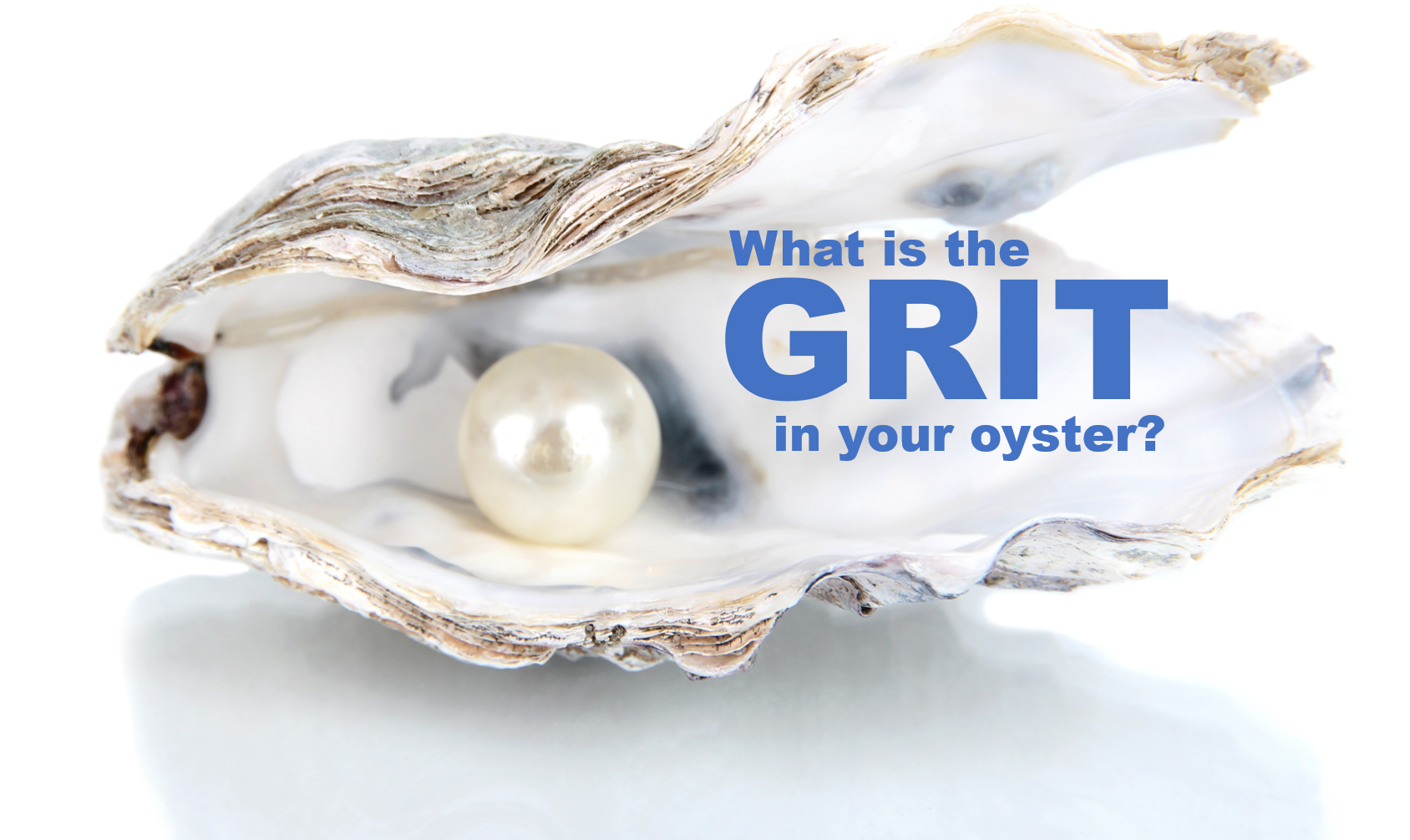
Daniel Ek, the Swedish entrepreneur and technologist best known as the co-founder of Spotify, recently tweeted “I can't think of anyone I admire who isn't fueled by self-doubt. It's an essential ingredient. It's the grit in the oyster. It's the passion, perseverance, and stamina that we must channel in order to stick with our dreams until they become a reality.”
I love the picture that paints of an oyster, wrapping an irritation in layers of protection until the pearl is created. Without the pain, you don’t get the pearl. Come to find out, oysters are not self-motivated. And the same may be true for us. It’s self-doubt, not confidence that is the essential ingredient.
Made me wonder what other seemingly negative emotions might actually motivate great success, fueling you to take action, approach problems differently, or creatively seek alternatives. It is said that necessity (ie, need, want) is the mother of invention. The same could be set about a great number of other negative things. Here are several that you might agree have played a role in your own achievement, either in yourself or others:
- Pain (as opposed to comfort)
- People pleasing (as opposed to independence)
- Anxiety (as opposed to calm)
- Noise (as opposed to quiet)
- Hunger (as opposed to being satisfied)
- Close-mindedness (as opposed to openness)
- Complexity (as opposed to simplicity)
- Slowness (as opposed to speed)
- Rigidity (as opposed to flexibility)
- Fear (as opposed to trust)
- Doubt (as opposed to certainty)
- Exclusion (rather than involvement)
- Discontent (rather than contentment)
Each of us have our own internal motivations. The ones above are often dismissed or rejected as being entirely negative, when you encounter them in yourself or others, but they can be the grit in the oyster that helps you achieve success. But only if you learn how to harness their lessons, with stamina and perseverance, all the way to the harvest.
This article was originally published on LInkedIn Pulse.

“The dream is free. The hustle is sold separately.” - Brian Kutchma
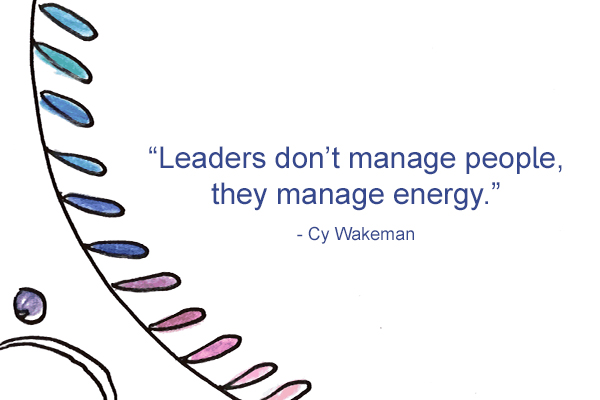
“Leaders don’t manage people, they manage energy.” – Cy Wakeman
And the first energy they manage is their own.
For more on leadership, check out Backing into the Future: 4 Ways to Make Change Work.

Jennifer joined other professionals across the AV and integrated experience industries on a recent podcast of The AV Life to talk about Women of Avixa.
See the Media Coverage page for other examples of articles and podcasts.
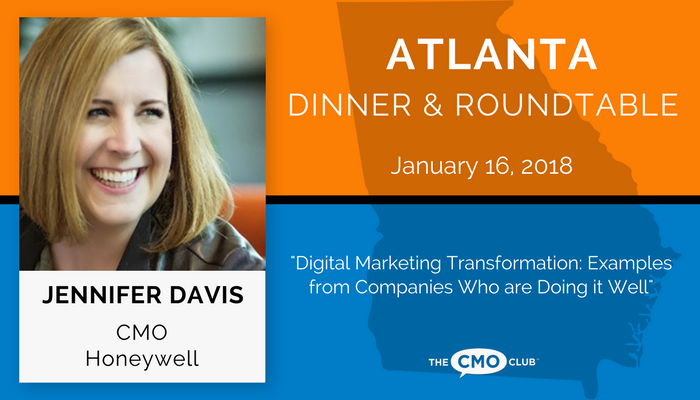
This member-only and guest event is an informal dinner with chief marketing officers at companies across industries in Atlanta, Georgia.

“Faced with the choice between changing one’s mind and proving that there is no need to do so, almost everyone gets busy on the proof.” – John Kenneth Galbraith
Economist John Kenneth Galbraith illustrated well the first step to change: the openness to change one’s mind. Without that, it is all defensiveness and resistance.
I recently ordered some bedding online and the package came with a printed insert that began “Dear valued customer.” At first, I scoffed at the amateur writing (clearly written by a non-native English speaker), but upon further reflection I am convinced this is the best marketing copy I have read all year. Or at least the most effective.
It successfully introduced their unique brand, it engendered empathy with their employees, it made me feel better about myself, encouraged me to read closely and completely, and was something that I joyfully shared with a few friends (and all of you). I can’t say any advertising or marketing literature I encountered in 2017 was as effective as this.
Here are a few excepts that you might enjoy and the principles they illustrate.
Authenticity: The first paragraph thanked me for my business and ended with this sentence “It is really a great luck for us to be able to encounter you on Amazon. Thank you for choosing our products, without your support, maybe I will get unemployed.” It might be hyperbole or brutally honest, but it certainly isn't boring or too "corporate" sounding.
Relational: The second paragraph talks about the product features. They end this idea by saying “Welcome to contact us and give us some advices that will be helpful to improve our products quality and services, we will continue to optimize the service and strive to do better.” You can just picture the eager employees awaiting the advices of customers. The third part of the letter encouraged customers to write positive reviews and if they couldn’t to contact them first for support. They sum up their approach like this “We convince that communication is the bridge to solve problems, we will certainly let your concerns get a good solution.”
Customer-Focused: The letter ends with a final greeting: “Finally, hope you could be nice every day ! Happiness every moment ! Have a healthier body and a sunny mood !” (spaces before the exclamation points are as printed). I couldn’t help, but smile when I read this.
Now, perhaps it is my deep familiarly with English-as-a-second-language communication for all my years working with Chinese, Japanese, and Korean suppliers that makes this letter endearing, but I think you can agree that it stands out in a sea of well-crafted correspondence. Although the experienced marketer in me shutters when I read the run-on sentences, improper vocabulary, and the like, this copy was effective in it’s purpose and isn’t boring! Not every brand or company could pull this off (nor would they want to), but perhaps it inspires us all to be a little more real in our communications in the coming year.
And, I hope it gives you a “sunny mood” as well!

Forgive the poor quality scan of the flyer. The actual was readable (mostly) and looked better than this.

I am honored to be a featured alumni in Pepperdine University's first ever distinguished alumni book along side other alumni of the business school who are leading companies across the country and the world. Thank you to Dean Deryck J. van Rensburg and the entire staff and faculty for all they do to help students achieve the "best for the world."


It’s the holiday season and in the final countdown, it seems everyone is a customer. But in the world of business-to-business commerce, the basic question is oft debated in board rooms and strategy meetings: who is our customer?
I often jokingly respond that the right answer to “who is our customer?” is “yes.” Especially if you sell complex solutions or through channel partners. But who’s voice is loudest in your “voice of the customer” that speaks into your offerings and strategies?
Seems simple enough, but for those of us who sell through channel partners or distributors or have products used by different people than those who buy, it can be a tricky question which requires a nuanced and highly strategic answer. For instance, who is the “customer” of a diagnostic display used to detect cancer? The hospital CIO or the radiologist who uses it every day or the patient who benefits from the early diagnosis. Who is the “customer” of a publisher of a complex enterprise software tool that sell through consultants who add necessary professional services to provide a solution to the companies they find, cultivate, and service? Who is the “customer” of a lighting company who is marketed by independent reps, specified by architects, purchased through distribution by contractors, programmed by lighting designers, and maintained by corporate facilities departments or property managers? Or what about advertising-based models, where the “customer” (who is paying for advertising) and the “user” (who would really rather not have ads) are inherently at odds. The definitions of a customer can be dizzying.
And adding to this confusion is changing market dynamics in many industries. Management consultants will want to analyze profit pools to make channel optimization recommendations, all the while experienced sales people appreciate the loyalty of existing partners while market disrupters disintermediate channels using technology. Integrators, resellers, and dealers are consolidating in many markets. And manufacturers and service providers are left wondering whether their routes to market are efficient enough and capable of serving the needs of the end users effectively. And for strategic reasons, you must be informed by the past, but look to the future.
When you are start into a “who is my customer?” conversation, which can devolve into academic exercises and tribal territory defensiveness, here are three questions that should be asked to provide actionable clarity.
1. Who sees the most value in our offering?
No matter where you are in the supply chain, there is someone out there that appreciates the value that you are producing between your “raw materials” and “finished goods.” So, who best appreciates what your product or services do and sees the productivity improvements, cost savings, or other tangible or intangible benefits of your offering? This may or may not be the entity with whom you are directly transacting. It is often likely to be a specifier or end user, but it could be a channel partner who sees your offering as part of their solution and ability to differentiate against their competition. The answer to this question has huge implications on product management, pricing strategies, and overall business approach. If the people that see the most value, are not in a position to pay for it, then it is difficult to monetize the differentiation you have built into your offering. And, of course, your offering today might not be what you are bring to market in the future and this discussion about who values and can afford the differentiation you are offering is a good input into your product roadmap.
I have lead products whose primary value proposition was to help integrator partners generate more profit with easier installation and easier service features. End users of the system didn’t necessarily have visibility to these features and were not willing to pay more, but the resellers and installers preferred the product strongly and were able to shape demand effectively and maintain a price premium. In other businesses, the value propositions are for the end user, and the channels are just there to fulfill demand created directly by the brand and help the brand influence at the point of purchase.
2. Who best represents independent demand for our offerings?
One of the arguments for supporting channel partners is that they have customer relationships and can influence transactions to the point that they are essentially a customer and can take their business (or more precisely, the business of their captive customers) virtually anywhere they want. When Costco decides that they will only accept American Express, Visa and MasterCard are locked out and Costco members sign up for American Express credit cards. When Dell selects TechData for a multi-year distribution contract, Dell’s customers don’t know or care where their computer peripherals are being sourced. So, if you are PC peripheral brand who sells through distribution, who is your customer? In contract, when a homeowner calls their trusted “AV guy” to set up a home theater, they expect to hear recommendations and purchase product, even from brands they have never seen advertised. And when demand generation budgets are tight, it is very tempting to leverage channels (which you can pay in margin) to build demand that you otherwise can’t afford to cultivate on your own. Some channels are great at creating and shaping demand and others are best at fulfilling demand created by brands or manufacturers.
I have seen incredible wealth created in partnership with channels who can create category and build demand. And I have seen other channels that can’t create demand on their own at all. Depending on your industry and the level of commodification, there may not independent demand represented by your channel partners, in which case you are not selling “to” channels as much as you are selling “through.” This question has huge implications on how demand generation money is invested.
3. Do we transact with the most efficient partners to fulfill the demand?
During the consumer-driven holiday season, the challenges of the “who is my customer” question is well illustrated. In this season, we are consumers, but we are gift givers. We are transacting for others. Purchasing gifts that we might not have specified nor will we use. Your 80-year-old grandmother might not be the best prospect to put on the mailing list of a skateboard shop, even though that is where she purchased a gift for her grandson this year. Even though she technically was the one writing the check. Gift givers are like the purchasing department at a company, who might be listed in the manufacturer’s database as the customer, but in fact, are not actual customers. Or like the role of a reseller or dealer who may just be taking orders and don’t have a real ability to make product recommendations or command any customer loyalty. They might not represent independent demand. They might just be an intermediary. And as an intermediary are they effectively and efficiently playing their role in the value chain? Are you paying a reseller a large margin percentage to transact orders you have cultivated yourself? Are you absorbing service costs because your channel can not service their customers effectively?
These questions might lead you to answer the “who is my customer?” question with more purpose and confidence. The answer might not just be “yes” (ie, end users, channel partners, specifiers, influencers are all my customers), but it might be “no” (that we need to focus on just one or two of these groups to have the maximum impact). In fact, the real test of strategy is what you are saying “no” to and narrowing the voice of the customer and your definition of who you serve is a great place to start.
These are just a few of the questions that I have found most insightful when discussing channel strategies and customer experience approaches. I would love to hear your ideas as well, so leave a comment or engage on my blog (www.atjenniferdavis.com) to continue the discussion. I wish you all a warm and wonderful holiday season!
Cover image is a parody of “Are You My Mother?” book, a classic children's book by PD Eastman.
This article was originally published on LinkedIn Pulse.